Certified Lab Diamonds and what GIA and IGI Diamond Reports Fail to Include
Before we begin, we need to look back at GIA’s journey to reach lab diamond certifications. We will talk about what the diamond reports fail to include and what it means to you, the end user, and to the global market for lab-grown diamonds in general.
Lab Grown Diamonds and the GIA 
The heavily intertwined history of both lab-grown diamonds and GIA is very interesting, to say the least. GIA (Gemological Institute of America) was a pioneer in embracing lab-grown diamonds and one of the first labs to certify them, however, it is important to note that, at that time, some 15 years ago, man-made diamonds had a yellowish color and therefore, thought of as inferior to mined diamonds.
In recent years, lab-grown white diamonds have undergone a radical transformation in the industry. In the aftermath of the increased exposure and proliferation of lab-grown diamonds, GIA, as one of the early adopters, was in an excellent position to expand its certification business rapidly, with minimal effort. Nevertheless, they inexplicably stopped certifying the newer white man-made diamonds, but after a long battle, GIA announced in the middle of 2019 that it would begin certifying all lab-grown diamonds by the end of that year. The industry was pleased because most regarded lab-grown diamonds as too important to ignore, despite a few naysayers.
After not comparing equally for a while, the GIA eventually began applying the same standard of grading for both mined and man-made diamonds. As a result, this milestone was a significant one, showing that lab-created diamonds are fundamentally the same as mined diamonds.
However, it was a little late because their hesitancy allowed their competitor, IGI, to corner the lab-grown diamond certification market unimpeded, thus taking the lead.
What Do the Reports Include?
In accordance with strict international standards, IGI Diamond Reports provide information about a diamond’s cut, color, clarity, and carat weight. A sample report from IGI can be found below.
What the Reports Not Include and Why it Matters? 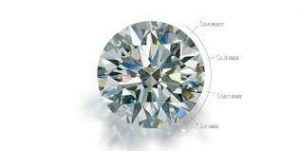
Before we can talk about what isn’t included, it’s fair to discuss what happens during the process of growing a lab diamond and why it is equally so important for a team of gemologists to Quality Check (QC) each diamond ensure that what the diamond reports don’t include are not overlooked during the buying process. It’s a fact that in today’s online retail market, often times the diamond is not visibly seen by the naked eye of the person purchasing the diamond until the diamond arrives to them already in their setting.
So, let’s talk about the process to understand why QC is important. During the growing process of the rough (as it’s called), which takes about 28 days, the rough can come up with different tinges (brown, gray, green, blue, mixed)
Tinge
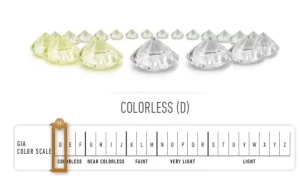 Both certifications, the IGI and GIA – grade color based on the side of the stone comparing it with a masterstone. In order to eliminate guesswork from diamond color grading, graders compare a diamond with known colors in the GIA D-to-Z scale, but the report does not indicate whether or not there is a tinge. In fact, they ignore the tinge. This is an important detail because the tinge reflects the brilliancy and the luster. Tinge can make a diamond look darker, so not having this inspected before purchase by a QC person on the ground at the grower can cause you to purchase a diamond that on paper looks great, but to the naked eye, appear brownish, yellowish, greenish, greyish, etc.
Both certifications, the IGI and GIA – grade color based on the side of the stone comparing it with a masterstone. In order to eliminate guesswork from diamond color grading, graders compare a diamond with known colors in the GIA D-to-Z scale, but the report does not indicate whether or not there is a tinge. In fact, they ignore the tinge. This is an important detail because the tinge reflects the brilliancy and the luster. Tinge can make a diamond look darker, so not having this inspected before purchase by a QC person on the ground at the grower can cause you to purchase a diamond that on paper looks great, but to the naked eye, appear brownish, yellowish, greenish, greyish, etc.
Luster
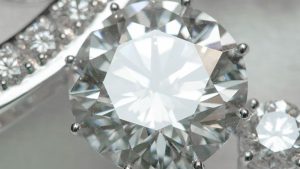
Another element that the GIA and IGI don’t actually qualify for is Luster. This is also another important aspect, because sometimes during the growing process, the diamond can have clouds that affect the brilliancy but are not shown. Even if a diamond has an excellent cut, it can still have a weak luster – making this another important reason to QC the diamonds while they are at the growers.
Bowtie
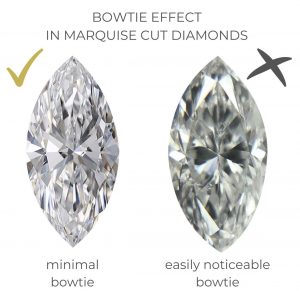
Aside from not including information about tinges or luster, the GIA and IGI diamond reports do not certify information about bowties. This is extremely important in the following shapes: oval, pear, marquise – because a bowtie can be visible to the naked eye and can affect the brilliance of the stone, especially if it is large. This is another reason why QC is a must.
Unfortunately, only a few companies like, The Art of Jewels have a dedicated QC team that works with every grower and visibly looks at each stone before shipping it. If a stone is inclusive of any of the above, the QC team rejects the stone and will attempt to find a better replacement or refund the customer.
Are there any Disadvantages between GIA and IGI Certified Stones?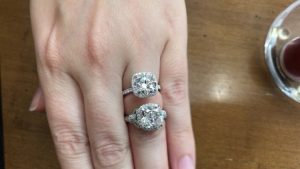
The disadvantage for customers is that GIA-certified stones are more expensive for a variety of reasons. First of all, they charge a lot more for certification than IGI. Due to GIA’s limited international offices, getting a stone certified by them is a time, and money-consuming process, both logistically and financially.
In terms of certification time, GIA takes about 1 month to get a stone certified versus IGI, which only takes a few days, not helped by the fact that GIA grades stones more strictly.
Considering all these factors, GIA-certified stones will always be more expensive than IGI-certified stones.
The real winners are the lab-grown diamond market and end users like you with the GIA entering the market, it validates the legitimacy and quality of man-made diamonds conclusively – leaving no confusion over lab-grown diamonds’ durability, color, and eternity. Now, you just need to determine which certification to choose and which company QCs their diamonds at the grower’s ground level.
For more related industry articles, check out our search terms on igi diamond report vs gia, GIA vs IGI, IGI vs GIA lab-grown, igi diamonds vs gia, igi diamond report vs gia, igi vs gia lab-grown, igi diamonds vs gia, igi vs gia lab grown



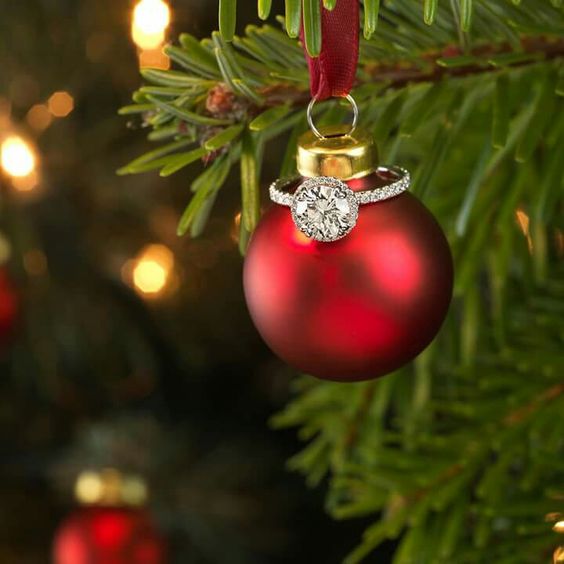
Great information about GIA